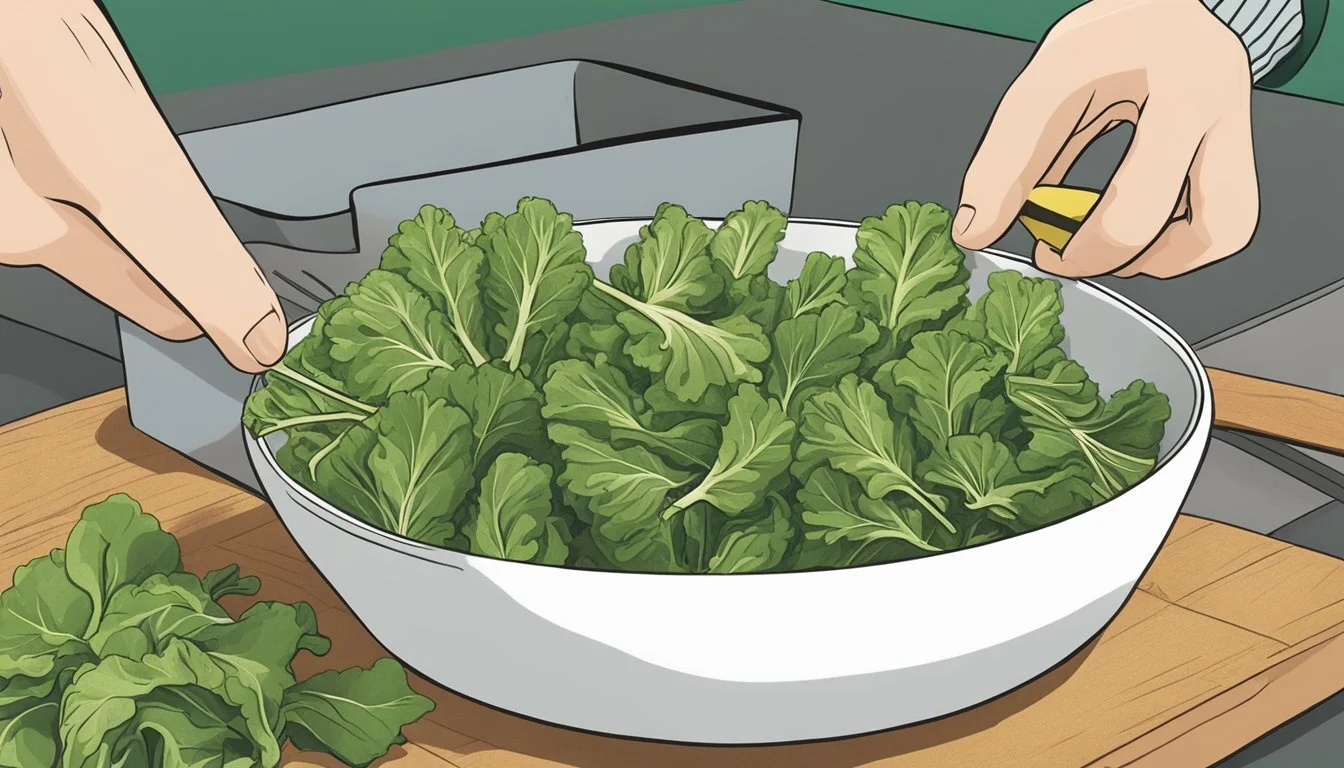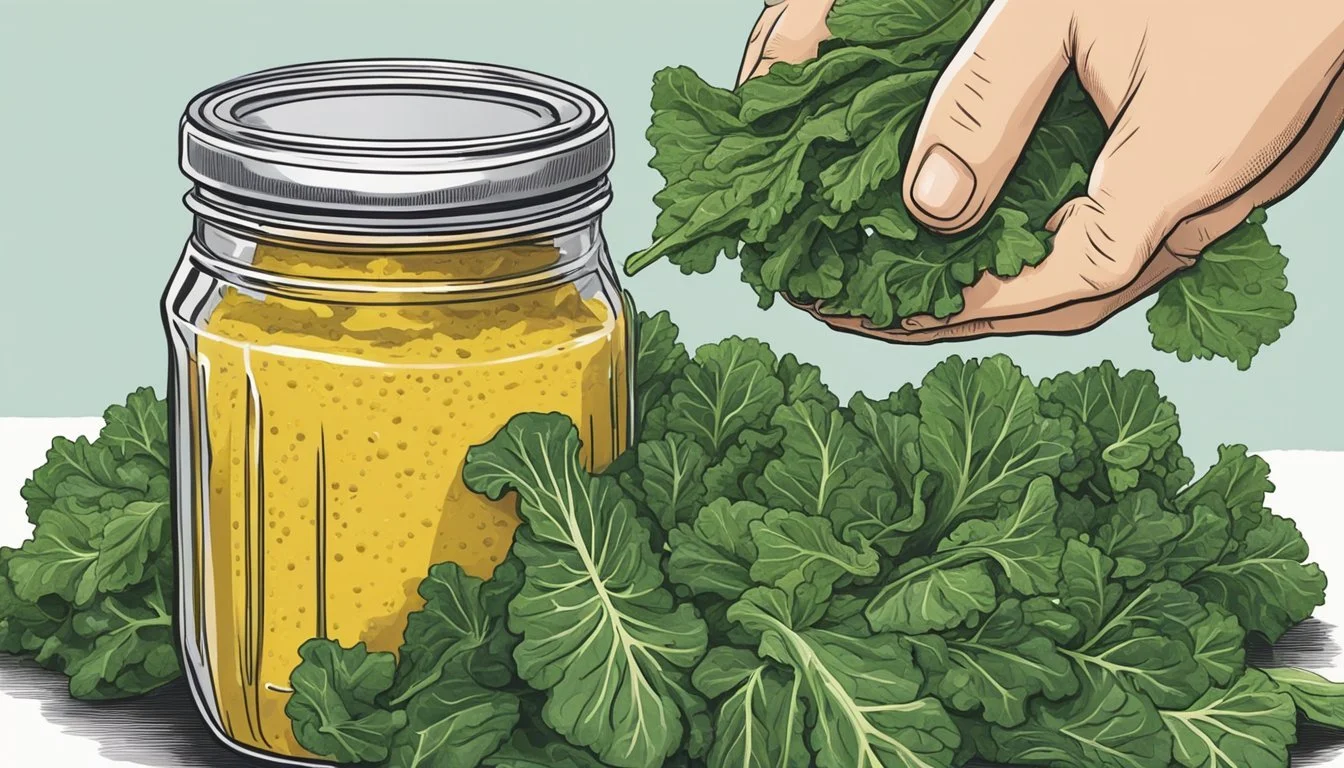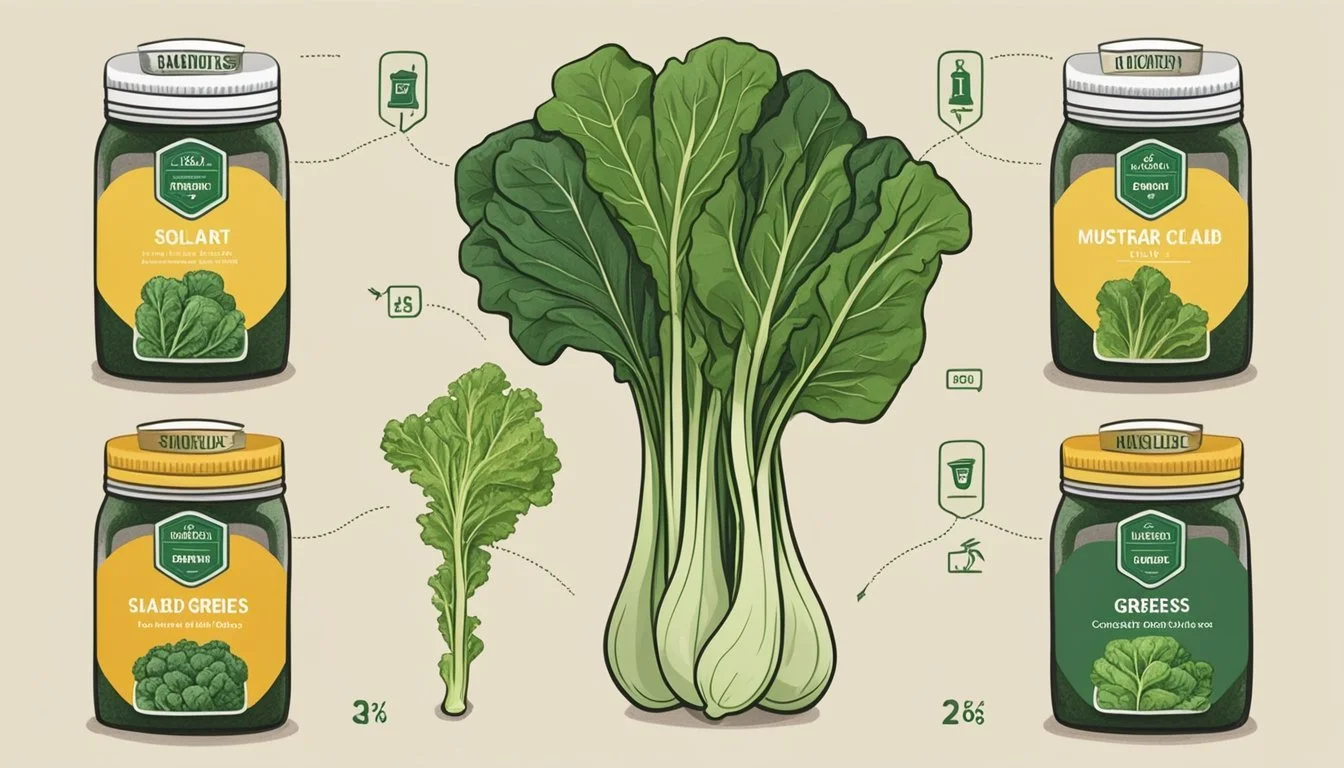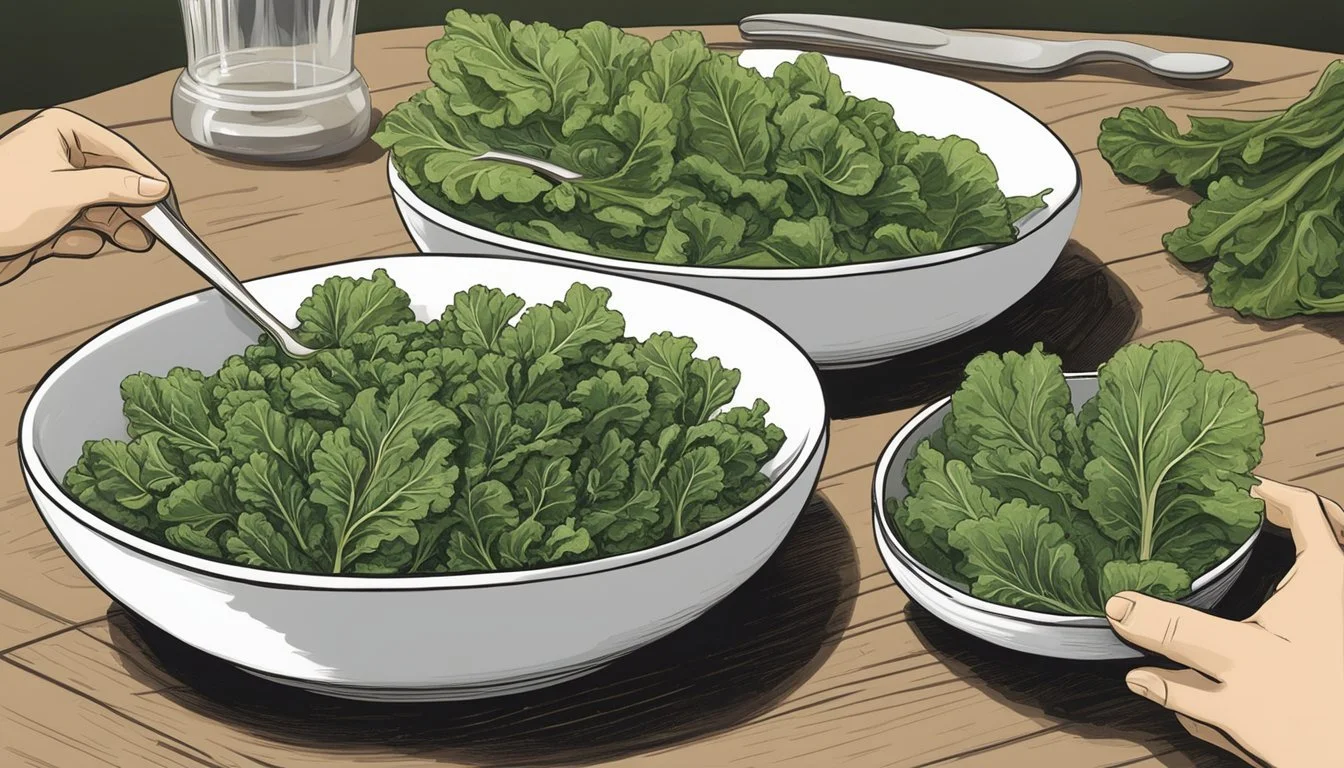How to Substitute Mustard Greens for Collard Greens
A Simple Guide
Substituting mustard greens for collard greens can be a suitable alternative in many recipes, as both are nutritious leafy vegetables that share some common culinary uses. While collard greens hail from the Brassica oleracea species and belong to the cabbage family, mustard greens are typically grouped with herbs, offering a distinct flavor profile. Both vegetables are green, leafy, and packed with nutrients, but they each bring their own unique taste and texture to dishes.
Mustard greens have a sharper, peppery flavor, which can add a different dimension to meals that traditionally use the more mild, earthy taste of collard greens. The texture of mustard greens is less robust than collard greens and has a more tender leaf, which can change the cooking time and technique slightly. When using mustard greens as a substitute for collard greens, it's important to consider their pungency and how it may influence the overall flavor of the recipe.
In regards to nutritional content, both mustard and collard greens are rich in vitamins and minerals, such as Vitamin A, Vitamin C, calcium, and iron, making them a healthful choice in one's diet. Despite their differences, these greens often can be used interchangeably with some adjustments, allowing for a variety of dishes to be enjoyed when one or the other might not be available or when a different flavor is desired. It’s a simple matter of understanding the characteristics of each to effectively incorporate mustard greens in place of collard greens.
Understanding Mustard and Collard Greens
When considering substitutions in the kitchen, it helps to understand the unique properties and nutritional profiles of the ingredients involved. Mustard and Collard greens, while often grouped together, offer distinctive flavors, textures, and health benefits that are crucial to recognize.
Origins and Characteristics
Mustard Greens:
Origin: Part of the Brassica family, regarded as an herb.
Characteristics: Leaves vary in shape; generally more frilly or serrated. Their flavor is spicy.
Collard Greens:
Origin: Related to the cabbage and also belong to the Brassica family.
Characteristics: Feature smooth, large leaves. The taste is milder, with a slight sweetness balanced by a bitter undertone.
Nutritional Comparison
The following table summarizes the nutritional content of mustard and collard greens:
Nutrient Mustard Greens Collard Greens Vitamin A Moderate High Vitamin C High Moderate Vitamin K Moderate Very High Calcium Moderate High Iron Moderate Moderate Potassium High Very High Folate High Moderate
Both greens are considered healthy options, rich in vitamins, minerals, and antioxidants. They also contain dietary fiber which supports digestive health. However, their nutritional emphasis varies, with collard greens offering ample vitamin K and calcium, and mustard greens providing significant amounts of vitamin C and folate.
Culinary Uses and Techniques
When substituting mustard greens for collard greens, understanding the culinary roles and preparation techniques of each is essential for achieving the desired flavor and texture in dishes.
Mustard Greens in Cooking
Mustard greens, known for their pungent and peppery flavor, are a versatile ingredient in the kitchen. They can be incorporated raw into salads for a spicy kick or cooked to reduce their bitterness and create a softer texture. When cooked, mustard greens are commonly added to stir-fries, soups, and as a steamed side dish. Their bold taste adds a distinct zest to any meal, especially when they are meant to replace collard greens. To mitigate their intense flavor, one might start by sautéing them with garlic or onions before incorporating them into the final dish.
Raw: Adds a peppery punch to salads.
Cooked: Ideal for stir-fries and soups; sauté for a milder taste.
Collard Greens in Traditional Recipes
Collard greens hold a special place in Southern cuisine and soul food, where their savory flavor and sturdy leaves make them ideal for slow-cooking methods. Unlike mustard greens, collard greens have a milder, more earthy flavor and a texture that can withstand long cooking times without becoming mushy. Traditionally, they are simmered for hours with ingredients like ham hocks or bacon, which infuse the greens with a smoky depth. Given their role in dishes like collard green stews and sides, one can best replicate their unique qualities by preparing mustard greens with a similar approach but adjusting the cooking time to preserve their texture.
Southern Cooking: Often simmered with meats for depth of flavor.
Texture: Sturdy leaves suitable for lengthy cooking.
Substituting Mustard for Collard Greens
When substituting mustard greens for collard greens, cooks should take into account the differences in taste and texture, as well as adjustments in portion sizes and cooking times.
Taste and Texture Adjustments
Mustard greens carry a peppery and slightly bitter flavor profile compared to the milder taste of collard greens. To compensate for this, one might consider adding a dash of sugar or honey to balance out the bitterness. Texturally, mustard greens tend to be a bit more tender than collards and may require less cooking time. For recipes that call for a gentler taste akin to collard greens, mustard greens can be subdued by sautéing them in a mixture of olive oil and butter, seasoned with a pinch of salt.
Portion and Cooking Time Considerations
Since mustard greens can have a more pronounced flavor, chefs may opt to use a smaller quantity than collard greens to prevent overpowering the dish. As an example, if a recipe calls for one cup of collards, they should consider using three-quarters of a cup of mustard greens. Cooking times will also differ; mustard greens usually cook quicker due to their tender nature. Therefore, they should reduce the cooking time by a few minutes and taste frequently to ensure that the mustard greens retain some structure without becoming overly soft.
Complementary Ingredients and Flavors
When substituting mustard greens for collard greens, it's important to consider how the pungent and peppery taste of mustard greens can be balanced with complementary ingredients. They integrate well with flavors that can stand up to their boldness.
Flavor Pairings for Mustard Greens
Mustard greens work well with robust, savory flavors. A common approach for tempering their bitterness includes sautéing with garlic or mixing with olive oil. Adding a pinch of salt can further help to soften the sharpness. In Asian dishes, soy sauce provides a salty and umami counterpoint to the greens' natural zing.
Garlic: A classic pairing that mellows the bite of mustard greens.
Olive oil: Helps in softening the texture and melding flavors.
Salt: Just a pinch can significantly reduce bitterness.
Soy Sauce: Adds a depth of flavor and complements the spicy kick.
Enhancing Collard Greens with Other Ingredients
When collard greens are on the menu, one can enrich their earthy flavor with butter or a dash of cream for creamed greens. To update the traditional Southern collard greens, a cook might opt to simmer them with a ham hock. When these greens are used in sandwiches or as a wrap, combining them with a strong cheese can add a creamy texture and rich flavor.
Butter/Cream: Imparts richness to collard greens, making them tender.
Sandwiches: Use the sturdy leaves of collard greens as wraps for a nutritious and low-carb option.
Stews: Collard greens can withstand long cooking times, making them ideal for stews.
Pesto: Pureeing the greens into a pesto offers a novel use in pasta dishes or as a spread.
Alternative Greens and Substitutions
Choosing the right substitute for mustard greens depends on flavor preference and the nutritional value one is seeking. Substitutes can range from other cruciferous vegetables to more tender leafy greens, each bringing its own texture and taste to dishes.
Exploring Similar Leafy Greens
When replacing mustard greens in a recipe, there are several leafy greens that make suitable substitutes due to their similar texture and nutritional profiles. Two of the most common alternatives are kale and collard greens, both of which belong to the same plant family as mustard greens.
Kale: A robust and nutrient-dense vegetable, kale is rich in vitamin C and offers a slightly peppery flavor. It's versatile enough to be eaten raw or cooked, and can effectively mimic the heartiness of mustard greens.
Types of kale:
Curly kale
Red Russian kale
Baby spinach leaves can also be used for a milder flavor and tender texture.
Collard Greens: Collards are a close relative to mustard greens and provide a similar chewy texture. They are an excellent source of vitamins and minerals, making them a healthy choice in any meal.
Swiss chard and rainbow chard are other vibrant options that add both color and a slightly bitter taste to dishes.
Turnip Greens: Another cruciferous vegetable, turnip greens are a bit more pungent than mustard greens but work well as a substitute in cooked dishes.
When to Choose Another Substitute
While the aforementioned greens are similar to mustard greens, sometimes a different flavor profile or texture is desired, or those options may not be available. In such cases, other vegetables can serve as stand-ins:
Spinach: Whether it's English spinach or baby spinach, spinach is a tender green with a mild, slightly sweet flavor. It's less bitter than mustard greens and cooks down quickly, making it ideal for quick meals.
Silverbeet, often known as chard, has thick, crunchy stems and is milder than mustard greens.
Chinese Broccoli: Also known as Gai Lan, Chinese broccoli has thicker stems and smaller leaves, offering a slightly bitter flavor that stands up well in the absence of mustard greens.
Dandelion Greens: These greens bring a bitter and slightly tangy flavor to the table and are commonly enjoyed raw in salads.
Cabbage and Brussels sprouts: While not leafy greens, they are related to mustard greens and can be used chopped or shredded in cooked dishes for a similar crunch and peppery taste.
Cauliflower and Broccoli: For a completely different texture but comparable health benefits, these can be used in dishes where the greens are not the main focus.
Incorporating these vegetables as substitutes will not only replicate the characteristics of mustard greens but can also introduce new flavors and textures to traditional recipes, while maintaining a healthy profile.
Shopping and Storing Tips
When substituting mustard greens for collard greens, it's essential to understand how to select the best greens at the store and how to store them properly to maintain their freshness and nutrition.
Selecting the Best Greens at the Grocery Store
In the grocery store, look for collard greens and mustard greens that have fresh, vibrant leaves without any signs of wilting or yellowing. For the most nutrients, opt for organic greens when available. Here's what to check:
Collard Greens: Choose bunches with dark green, firm leaves. Smaller leaves tend to be more tender and have a milder flavor.
Mustard Greens: Select mustard greens with crisp, bright leaves. They may have a peppery bite which will mellow slightly when cooked.
Preserving Freshness and Nutrition
To maintain the freshness and nutritional content of greens, proper storage is crucial. These tips can help preserve both fresh and frozen greens:
Refrigeration: Store greens in a damp paper towel and place them inside a sealed plastic bag or an airtight container in the crisper drawer of the refrigerator. This can help keep the greens fresh for several days.
Freezing: For long-term storage, blanch the greens first, dry them thoroughly, and then store them in an air-tight container or freezer bag. Label with the date to keep track of how long they have been stored. Freezing can preserve the nutrients effectively.
Health Benefits and Dietary Considerations
Substituting mustard greens for collard greens can provide a range of nutrients essential for a healthy diet. Both greens are low in calories and fat, and rich in dietary fiber, vitamins, and antioxidants, making them beneficial for maintaining overall health.
Incorporating Greens into a Healthy Diet
Mustard greens, with their peppery flavor, can be a flavorful addition to the diet. They are particularly rich in vitamin C and folate. The dietary fiber in mustard greens supports digestive health. In contrast, collard greens are typically milder in taste and are a nutritional powerhouse with high levels of vitamin K and vitamin A.
Mustard greens nutrient profile per 1 cup cooked:
Vitamin A: 96% of Daily Value (DV)
Vitamin C: High amount
Vitamin K: 690% of DV
Dietary Fiber: Supports digestion
Collard greens nutrient profile per 2 cups raw:
Vitamin A: Significant amount
Vitamin K: High levels
Dietary Fiber: Beneficial for gut health
Calories: Low
Impact on Health and Well-being
Both mustard greens and collard greens contain glucosinolates and antioxidants, compounds that help the body combat oxidative stress and may lower the risk of certain diseases. Regular consumption of these greens, as part of a varied diet, can contribute to one's overall health and well-being. Their low calorie and fat content also make them suitable for weight management programs.
Antioxidants: Present in both greens to help reduce oxidative stress.
Glucosinolates: Found in mustard and collard greens, these compounds have potential health benefits.
In summary, incorporating either mustard greens or collard greens into one’s diet can offer various health benefits, from providing essential nutrients to combating oxidative stress, while adding flavor and variety to the diet.









